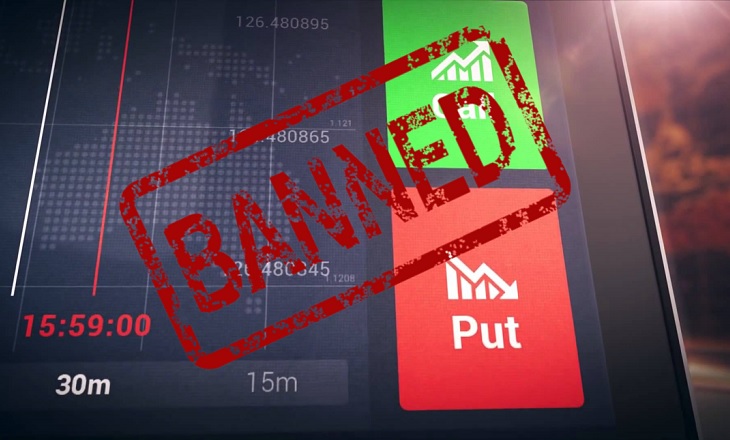Just halfway through its initial three month ban on offering binary options trading products in the EU, pan European financial regulator ESMA has announced that it will be extending the ban for a further three months.
The initial temporary ban was finalized in March and came into effect on July 2, running through to October 1. Now ESMA has stated that the ban will be extended for (at least) a further three months, through to January 1, 2019.
However, ESMA did state that certain types of longer dated binary options would be exempt from the ban (more details on that below).
The other side of ESMA’s new trading regulations – mainly a temporary cap on leverage on Forex and CFD products – was not mentioned in today’s release. Those regulations came into effect a month after the Binary Options ban, on August 1, and run through to the end of October. While many (if not most) market participants believe that those rules will also be extended beyond October, no definitive decision has yet to be made (or at least announced).
The full announcement made today by ESMA reads as follows:
ESMA TO RENEW PROHIBITION ON BINARY OPTIONS FOR A FURTHER THREE MONTHS
24 August 2018
MIFID – INVESTOR PROTECTION
The European Securities and Markets Authority (ESMA) has agreed to renew the prohibition of the marketing, distribution or sale of binary options to retail clients, in effect since 2 July, from 2 October 2018 for a further three-month period. ESMA has also agreed on the exclusion of a limited number of products from the scope of the measure.
ESMA has carefully considered the need to extend the intervention measure currently in effect. ESMA considers that a significant investor protection concern related to the offer of binary options to retail clients continues to exist. It has therefore agreed to renew the prohibition from 2 October.
During its review of the intervention measure, ESMA considered the specific features of binary options currently within the scope of the measures. Certain binary options were found to have specific features which mitigate the risk of investor detriment, namely; they are sufficiently long-term (at least 90 days); are accompanied by a prospectus; and are fully hedged by the provider or another entity within the same group as the provider. ESMA considers that a binary option that benefits from the cumulative effect of these three criteria is less likely to lead to a significant investor protection concern.
In addition, products that at the end of the term have one of two predetermined pay-outs, neither of which is less than the initial investment of the client, will be excluded. The pay-out for this type of binary option could be the higher or lower one but in either circumstances the investor would not lose money compared to their total investment. As the investor’s capital is not at risk these products should be explicitly excluded.
Hence, ESMA agreed to exclude from the scope of the renewal the following binary options:
- a binary option for which the lower of the two predetermined fixed amounts is at least equal to the total payment made by a retail client for the binary option, including any commissions, transaction fees and other related costs; and
- a binary option that meets cumulatively the following three (3) conditions:
- (a) the term from issuance to maturity is at least ninety (90) calendar days;
- (b) a prospectus drawn up and approved in accordance with the Prospectus Directive (2003/71/EC) is available to the public; and
- (c) the binary option does not expose the provider to market risk throughout the term of the binary option and the provider or any of its group entities do not make a profit or loss from the binary option, other than previously disclosed commissions, transaction fees or other related charges.
ESMA will continue to keep these products under review during the prohibition period. The renewal was agreed by ESMA’s Board of Supervisors on 22 August 2018.
Next steps
ESMA intends to adopt the renewal measure in the official languages of the EU in the coming weeks, following which ESMA will publish an official notice on its website. The measure will then be published in the Official Journal of the EU and will start to apply from 2 October 2018 for a period of three months.
